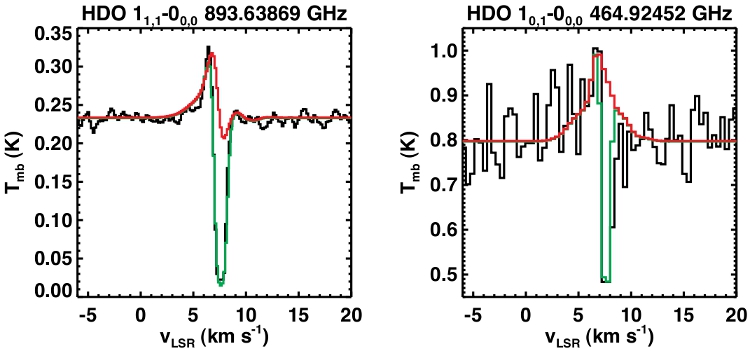| EPoS Contribution |
|
Water deuteration in star-forming regions
Audrey Coutens NBI/StarPlan, Copenhagen, DK | |
| Not only does water play a dominant part in the cooling of warm gas and in the oxygen chemistry, but it is also a primordial species in the emergence of life, as comets and asteroids may have brought a large fraction to Earth to form the oceans. Observations of deuterated water are an important complement for studies of H2O to understand how water forms and how it has evolved from cold prestellar cores to protoplanetary disks and consequently oceans for the Earth's specific, but possibly not isolated, case. Numerous HDO lines were detected with the Herschel/HIFI instrument and ground-based telescopes towards several Class 0 protostars. Thanks to the large range of upper energy levels covered by these lines, they make it possible to investigate the water deuteration both at small and large scales. Indeed, on the one hand, the HDO fundamental transitions observed with HIFI at 894 GHz and with ground-based telescopes at 465 GHz show a very specific line profile with a blue-shifted emission and a red-shifted narrow absorbing component. The spherical non-LTE modeling of their line profiles observed towards three sources (IRAS16293-2422, NGC1333-IRAS4A, and NGC1333-IRAS4B) indicates that a cold and extended water-rich layer surrounds the protostars (see Figure). On the other hand, some very excited HDO lines observable from the ground both with interferometers and single-dish telescopes probe the emission from the warm inner regions (T > 100 K) where water thermally desorbs. Combined with observations of the H2-18O isotopologue, the water deuterium fractionation can be investigated throughout the envelope from the warm inner region to the cold extended regions. With the detection of the doubly-deuterated form of water (D2O), the D2O/HDO and D2O/H2O ratios can also be determined and help to constrain the water formation conditions. I will here present an overview of the water deuterium fractionations derived in these three Class 0 sources and discuss the origin of the variation found at small and large scales. New results based on recent interferometric observations towards the source NGC1333-IRAS2A will also be presented. | |
 | |
| Caption: Modeling of the HDO fundamental transitions observed towards the low-mass protostar NGC1333-IRAS4A with an added water-rich absorbing layer (in green) and without this layer (in red). | |
| Collaborators: J.K. Jorgensen, NBI/StarPlan, Denmark |
Key publication
Suggested Sessions: Chemistry |

